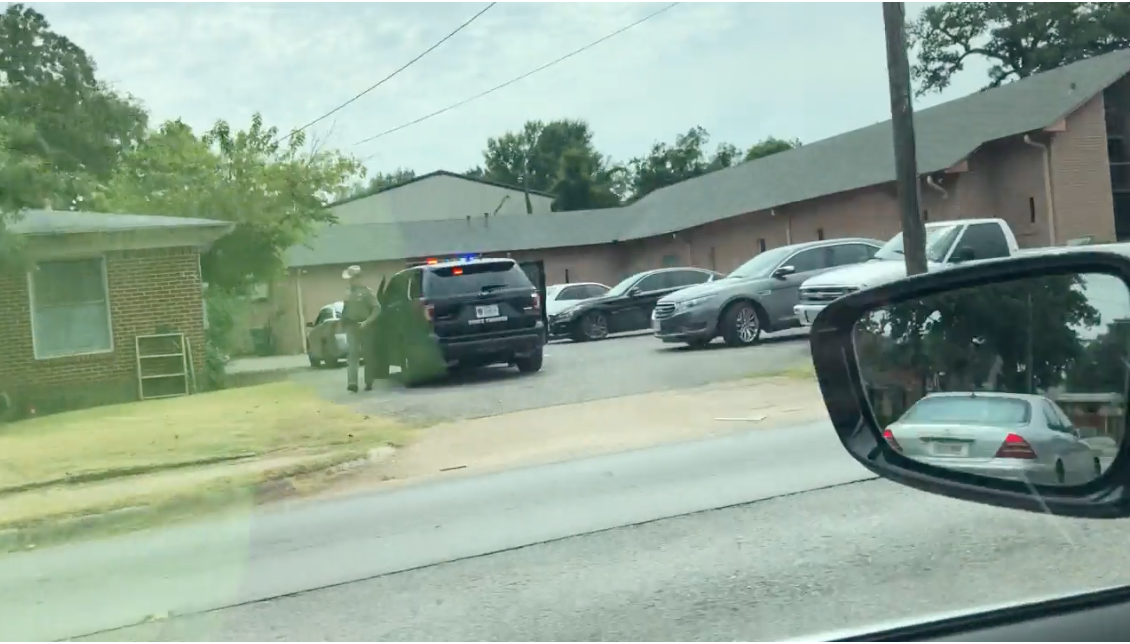Citing staffing shortages in the police department, Austin announced in March that state troopers would patrol alongside city police. Dallas went through this same dance in 2019, asking for help from the Texas Department of Public Safety after the city recorded more murders in a single month than it had in just about two decades.
Former police Chief U. Reneé Hall said the department identified eight “high-crime areas,” but she wouldn’t elaborate on how the state troopers would be deployed or how many would be patrolling. In Austin, Mayor Kirk Watson also kept quiet. Yesterday, the Austin American-Statesman obtained a report from the Travis County District Attorney’s Office that showed that nine out of 10 people arrested on misdemeanor charges by the Texas Department of Public Safety in the past six or so weeks were Black or Latino.
It sounds similar to the flood-the-zone approach DPS took in Dallas four years ago, when they pulled over 12,500 people in a seven-week period. That’s about 255 stops a day, most of which, said Dallas Councilman Adam Bazaldua at the time, were happening around the Central Scyene zone, in the South Dallas district that he represents.
There are more parallels. Travis County District Attorney Delia Garza told the Statesman, “If the goal is to address violent crime, this is not the right approach.” Dallas County District Attorney John Creuzot told the media in 2019 that “pulling people over for expired plates is not going to get it done.”
Inside the city limits, the troopers are gofers. They’re policing by mass, a call-and-response strategy that disproportionately occurs in Black and Brown neighborhoods. In Dallas, those 12,500 traffic stops resulted in 400 arrests and seizures of 71 guns, 37 pounds of marijuana, a half-pound of meth, and 1.5 pounds of cocaine. The department reported that murders and robberies remained up by 33 and 34 percent over that same period, while violent crime dropped 29 percent. But it came back.
Mayor Eric Johnson was elected in June, around the time Chief Hall asked the governor for help from state police. In 2019, Dallas’ violent crime rate increased 14 percent year over year. In 2020, it went up another 5 percent—after the troopers left town.
In Austin, the Statesman reported that troopers “are being deployed to Austin neighborhoods where police are receiving calls … that indicate where crime is occurring.” And despite the city being about 48 percent people of color, Black and Latino residents accounted for about 90 percent of the trooper arrests. Mostly on “low-level drug offenses, drunken driving, and other crimes.”
Council members there shared the same concerns that bubbled up in Dallas four years ago. Specific neighborhoods were seeing an increase in troopers, which made them concerned that they were being targeted. In Dallas, it ended in tragedy. Troopers tried to pull over a driver who failed to signal a left turn. He fled. He was shot and killed exiting his vehicle with a gun. He had been shot 16 times, according to the medical examiner.
To some, the presence of troopers led to an unnecessary confrontation with police that ended with a life lost and no sustained decline in violent crime. As District Attorney Creuzot later told the media, “A taillight out is not going to drive down the murder rate.”
What’s happening in Austin is relevant here today because the possibility of bringing troopers into town has once again popped up.
At the April 10 meeting of the Dallas City Council’s Public Safety Committee, Councilwoman Cara Mendelsohn, of Far North Dallas, noted that “there’s always this item floating around about DPS.”
It’s time for the annual concern of violent crime spiking in the summer. Police Chief Eddie García has said the department is down about 200 officers, likening his operation to playing baseball with seven of the nine positional players. Mendelsohn then asked Garcia, “What would it take to ask DPS to come and help supplement? Is there a trigger for you? Do you anticipate seeing that this summer?”
García started his answer with “in light of what we’ve seen, obviously, in Austin” then said he didn’t “anticipate doing that.” He noted that state troopers are not immune to the shortages reported by police departments across the country. He said troopers are already assisting in targeted operations, but seeing state troopers patrolling in Dallas would be unlikely.
“I don’t anticipate asking for help,” he said.
Dallas is at a better place today than it was in 2019. The chief’s violent crime plan directs officers to tiny geographies—about the size of a football field—where department data show violent crime is most likely to occur. This response is part of why homicides and aggravated assaults have declined each of the past two years. Meantime, the city has invested about $50 million into community improvements that clear blight and add lighting and other infrastructure that eliminate the physical markers that often accompany violence.
As I reported in the April issue of D Magazine:
Most surprising, even as crime has dropped, so have arrests. They are down 19 percent since 2020: 9,886 then, 7,983 last year, showing that decreasing violent crime doesn’t necessitate putting more people behind bars.
Put together, it should make municipalities really consider how they respond to increases in crime. Dallas is showing the potential in decreasing violent crime with targeted community investments alongside strategic policing. It’s not done with mass arrests. Nor is it done by flooding the zone with state police who will one day leave and who have shown themselves to go harder on neighborhoods of color.
Author





